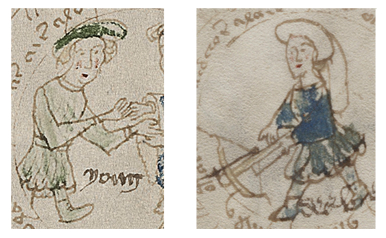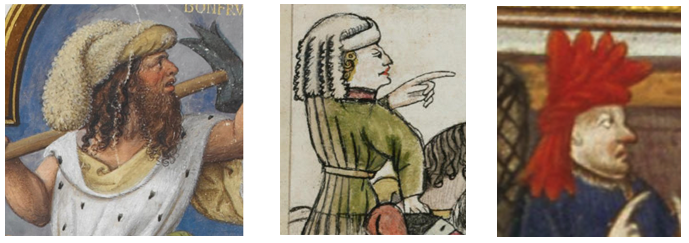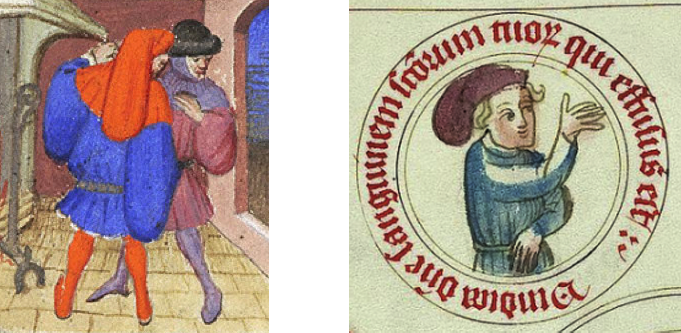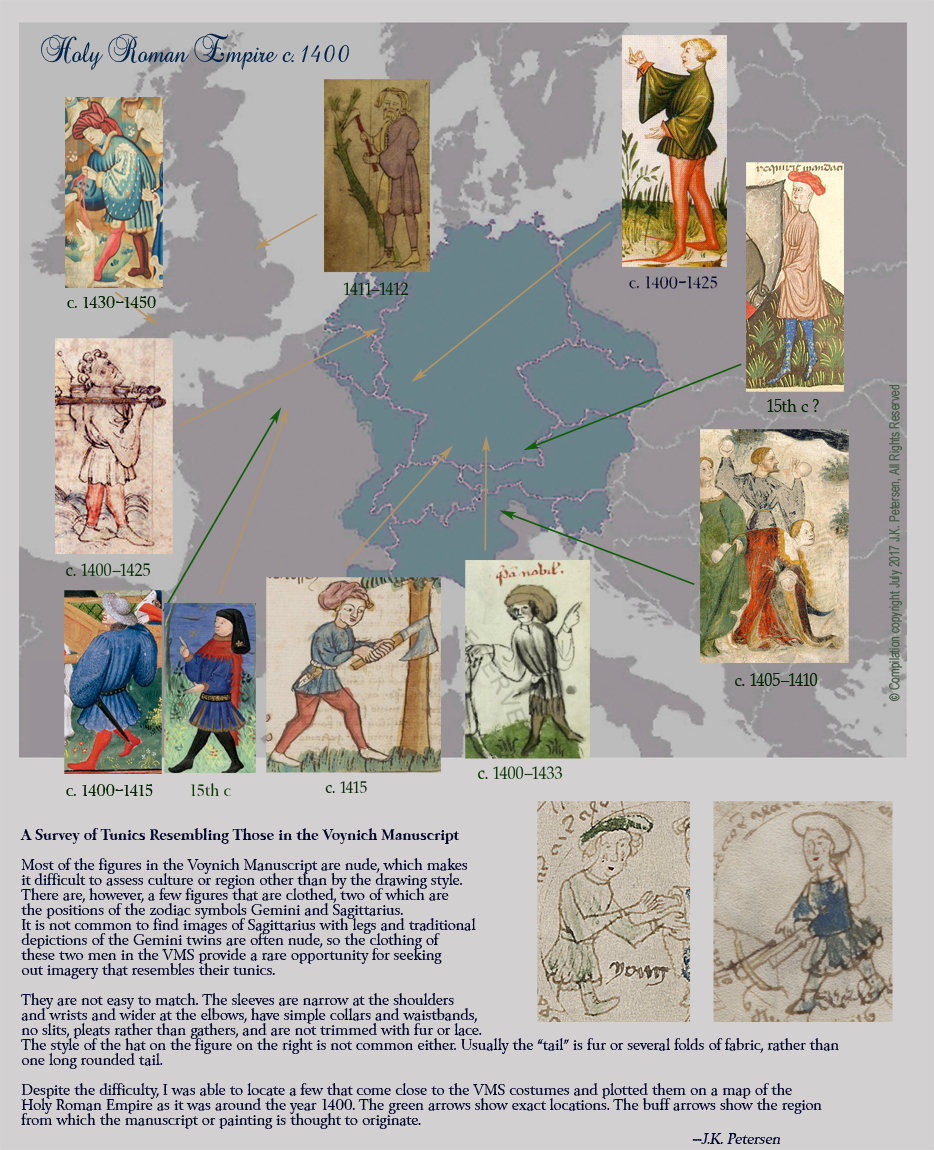Leverkusen 7 July 2017
buy Clomiphene online in south africa As a follow-up to a previous blog, I have added tunic images to a map of the Holy Roman Empire as it was about 1400. They are not perfect matches to the tunics in the Voynich Manuscript, but they are close, and it gives a visual sense of how this kind of clothing was depicted in manuscripts and paintings, and where this style of dress may have been worn.
Hunting for Hats
Locating tunics similar to those in the VMS was a challenge, and finding hats similar to the one on the crossbowman just as hard. Those with a rounded turban-like base with a portion that hangs to the back usually have tails made of fox fur or sheepskin or several tails or folds of fabric. Some are too short, others are squared off at the bottom.
A long round tail like the one in the VMS is less common, but I was able to find one (below left). Note that the tunic is a little more fancy than the VMS, with much wider sleeves and a cape the covers the shoulders. There are a number of similar hats in Vatican Pal Lat 871 and the one shown right notably wears a simple tunic with a plain band at the collar and waist. Note also that it is enclosed in a circle of text:

These images [added July 11, 2017] are from a Swedish book of law. They illustrate tunics that are more elaborate than the VMS, with fancy collars and sleeves as were worn by the upper nobility. The tails on the hats are not as long as those of the VMS, but they are of interest because they are the correct general style, and resemble those in Pal Lat 871. [Image credit: Eriksson’s Landslag Cod. Ups. B.68]
I have only located one image so far that matches well to the VMS tunic that also shows a man with short legs and a similar hat, in Vatican Pal Lat 1806 (included at the bottom of the following map). The origin of this manuscript is thought to be Augsburg, Germany. It includes quite a few images of tunics similar to those in the VMS.
And now to the map (you can click on the image to see it larger):
Summary
In searching for these pleated tunics, I looked all over the world but was not able to find any that were closer than the ones illustrated above in the more distant countries. Not only were the clothing styles different, but the drawing styles, as well. I also rejected tunics that were a combination of vest and tunic as separate pieces of clothing and those with split sleeves.
We cannot know how accurate the VMS illustrator drew the clothing, but it’s noteworthy that the VMS Gemini twin shows the laces on the boots, a detail that is absent from most other drawings. The illustrator made an effort to record details despite the small size of the VMS, which is why it seemed worth the effort to look for costumes of a similar style.
J.K. Petersen
© Copyright 2017 J.K. Petersen, All Rights Reserved
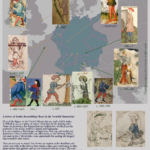 Postscript April 21, 2018: I have added one more tunic to the map originally posted July 7, 2017.
Postscript April 21, 2018: I have added one more tunic to the map originally posted July 7, 2017.
Postscript Oct. 4, 2018: I have many more tunic images, but some of them are the same style, from the same areas as already marked on the map. However, I was able to squeeze in four additional tunics, so this is Version 1.2 (note that some of these tunics are from manuscripts that have numerous images of this style of tunic but only one example was chosen). Version 1.3 is a minor update (a date disappeared so I added it back in, and tapestry arrow was adjusted):
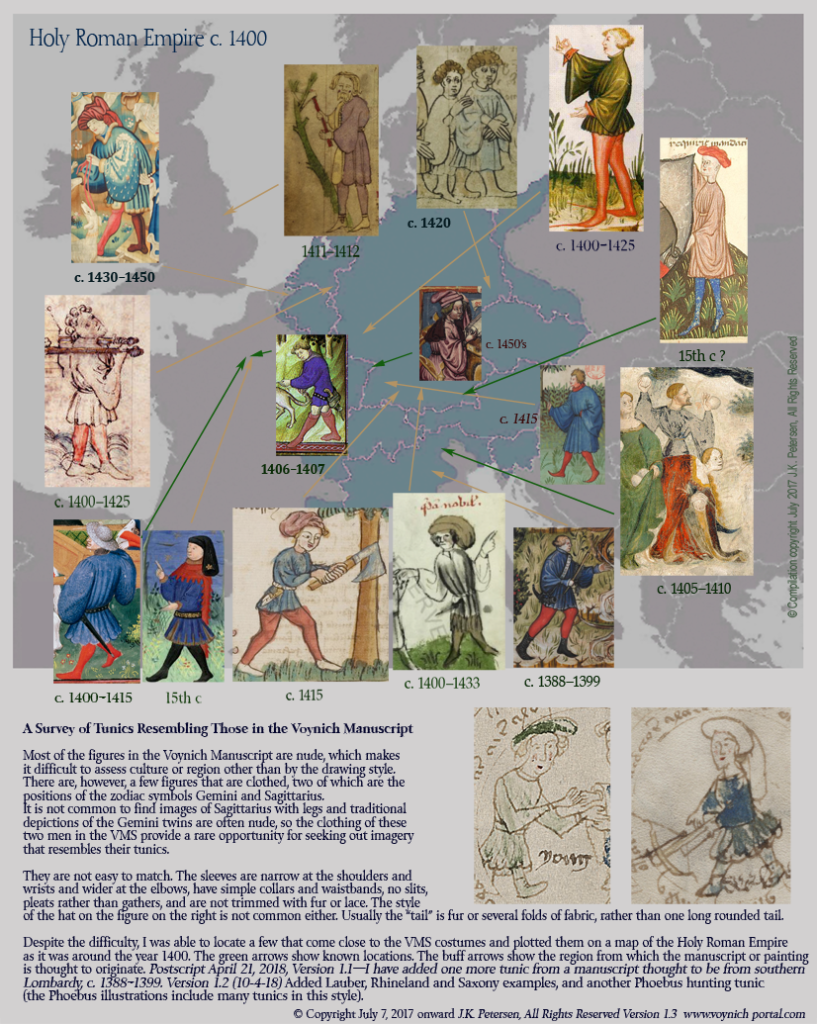
Postscript 7 July 2019: After I wrote this blog, and posted the map (2017), I was kindly informed that the Victoria & Albert Museum has revised the date of the Devonshire hunting tapestries downward to 1425–1430 (see tunic top-left).

